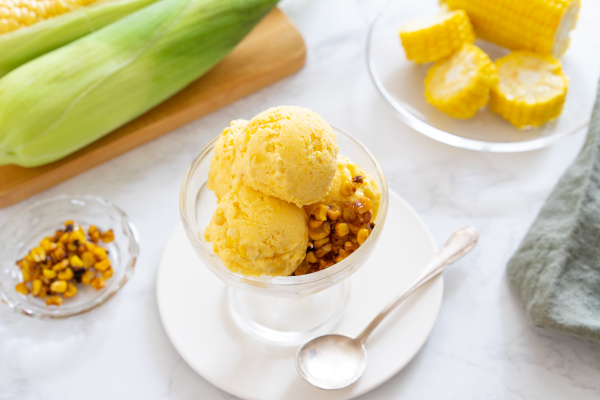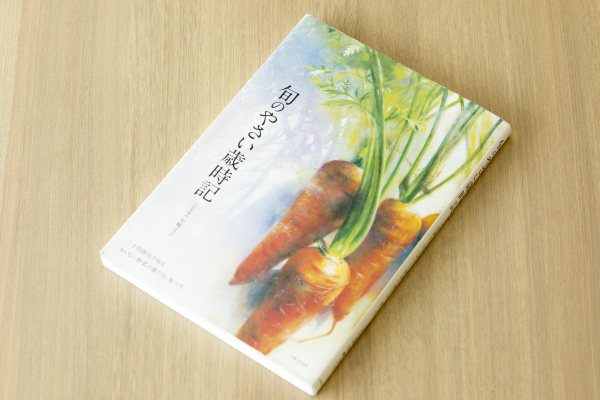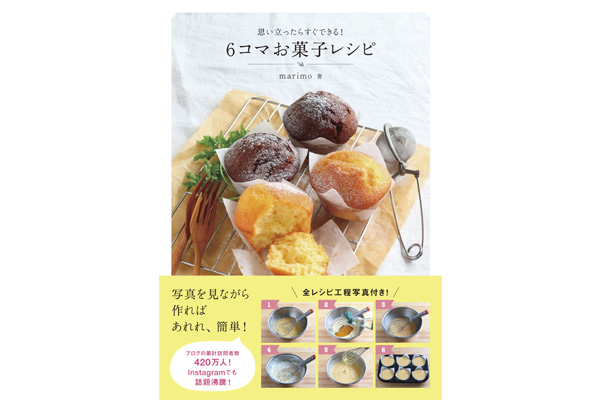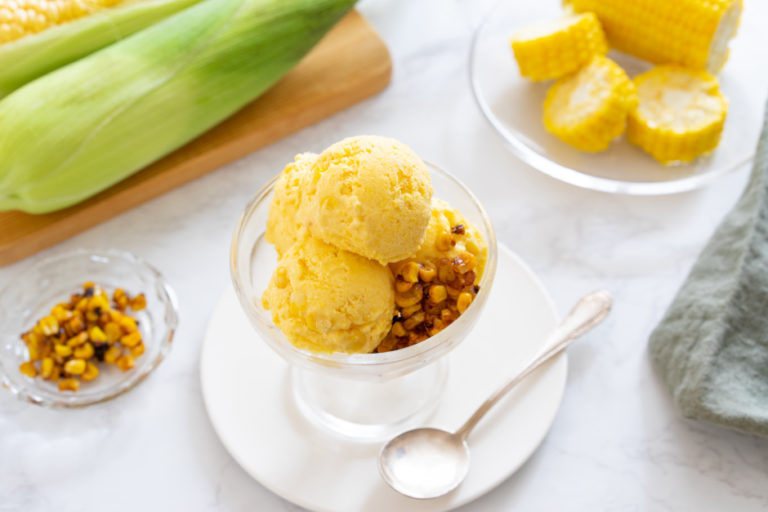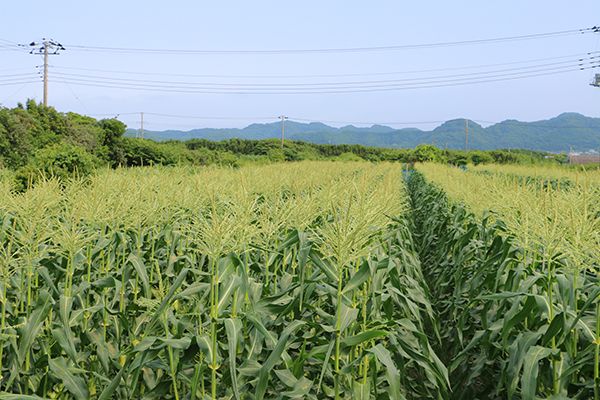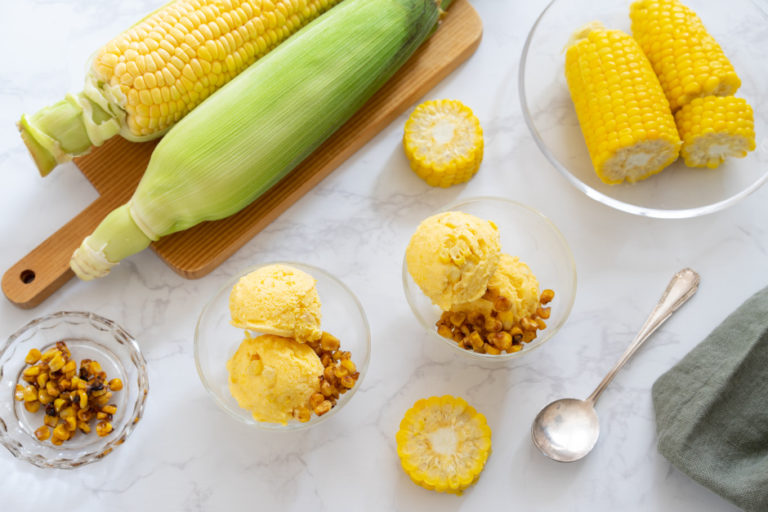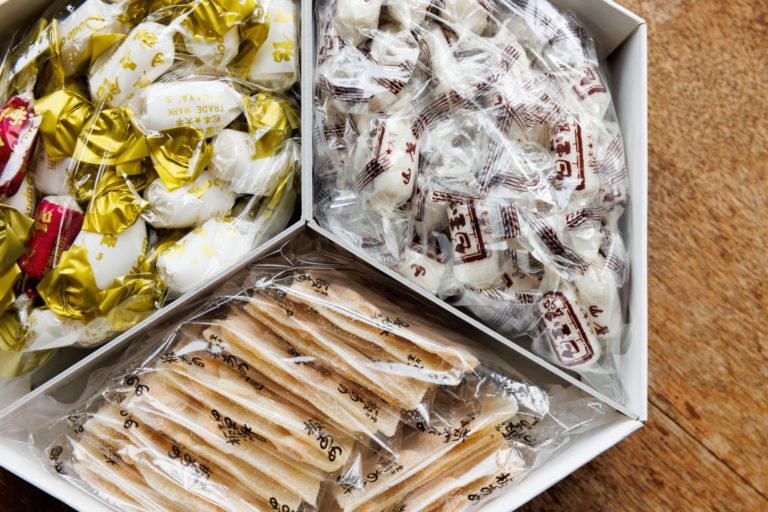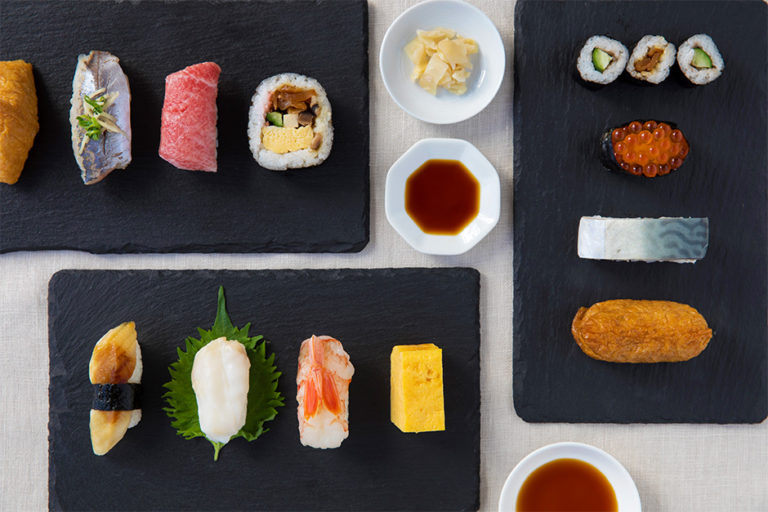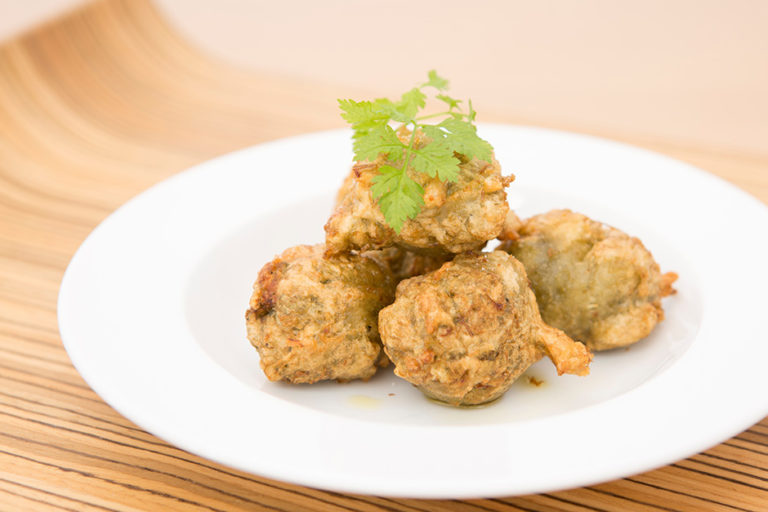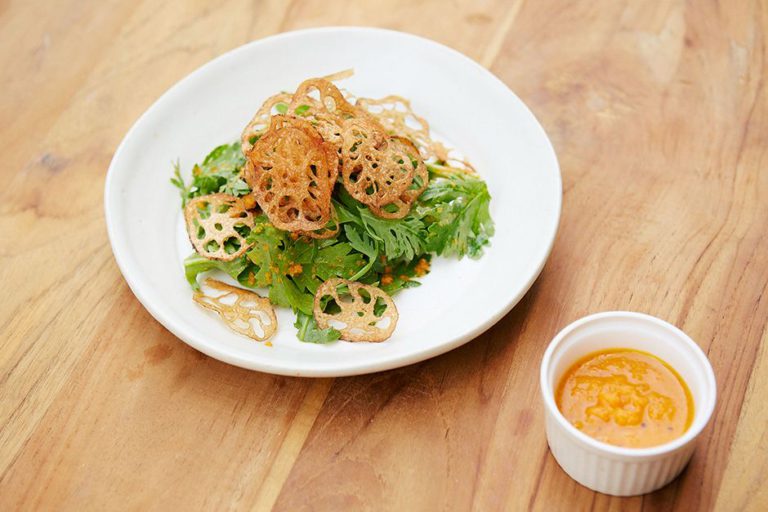The Taste of Peak Season: Seasonal Confectionery with Corn
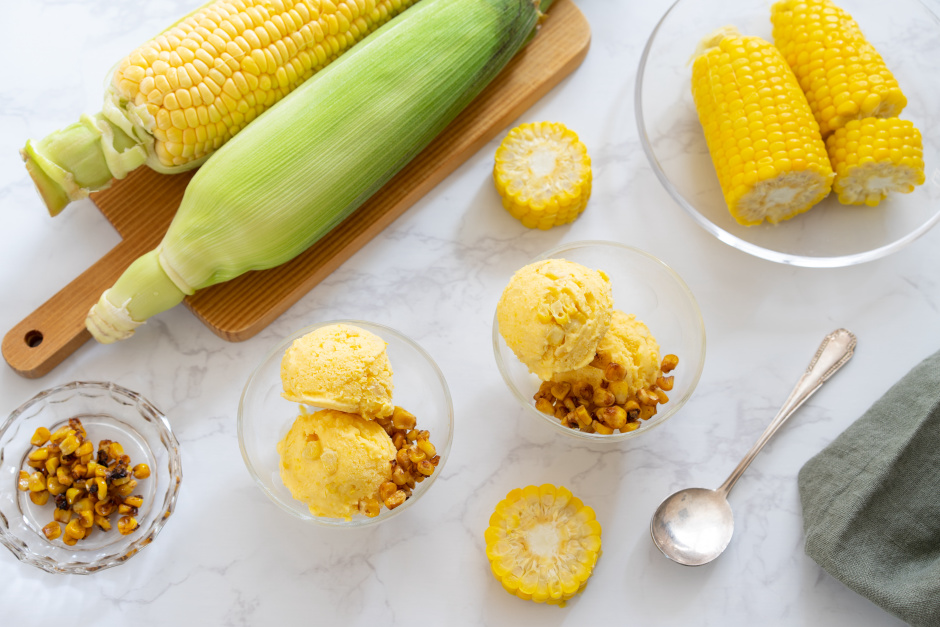
Introduced to Japan from overseas continents—the appeal of corn

The corn generally boiled and eaten in Japan is sweet corn (sweet-flavored type). There are many other types of corn produced around the world as grain, which is processed to make cornstarch, oils, popcorn, bioethanol and feed for livestock. These types are not sold in supermarkets. Almost all corn used for processing or feed in Japan are imported from overseas, making Japan one of the major nations for corn import in the world.
To learn more about the appeal of corn, we visited Ayako Yajima, who started up the fruit and vegetable shop Suika (Kagurazaka, Tokyo/closed in 2019), and is now raising her children while organizing events related to food and vegetables.
“There are many theories on where corn originated, but it is said to have originated in Latin America, around Mexico, 5,500 to 7,500 years ago. The Portuguese brought it over to Nagasaki, Japan during the late 1500s.Sweet corn started to be grown in Japan in the early years of the Meiji Era (1868-1912), after the American corn variation Golden Bantam was successfully harvested at a testing farm in Hokkaido. From then on, this type of corn spread throughout Japan. Currently Hokkaido still produces more than 30% of the country’s corn, but it is also grown in all parts of Japan,” says Yajima.
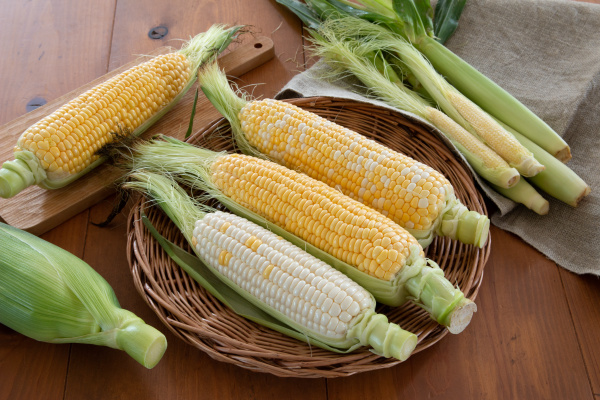
Corn is in season from July to September. The first produce of the season has thin skin, and is juicy and refreshing. As the season goes on, corn becomes plumper and firmer, with increased sweetness and a richer taste.
It is said that the fresher the corn is, the better it tastes. Yajima taught us of a saying among farmers, which is, “Put a pot on the fire before going to the field for corn.” Although it is best to cook corn right after purchasing it, if you are going to store it for a few days, storing it in a cold spot within a refrigerator is highly recommended.
“When boiling corn, leave only a few inner husks and heat in water without reaching the boiling point. Cooking it slowly will convert starch into sugar for a sweeter taste. Allow the corn to cool with the husks still on—this will trap in the flavor. The base of the corn is usually sweeter, and the core of the kernels are also sweet. When removing kernels, use the back of a knife to scrape the kernels off to eat. Mixing the kernels in some dressing is also delicious,” says Yajima, as she gives us some tips on tasty ways of eating corn.
The corn cob also offers sweetness and flavor. That is why, when cooking rice or making soups such as potage, it is better to cook corn whole and remove the kernels last—or if the kernels were removed first, to boil or cook the cob with the other ingredients to boost the flavor.
The many variations of sweet corn and how to select them
According to Yajima, there are four points for selecting a good ear of corn.
・Select corn that has a firm and thick base, and is solid and heavy
・Select corn that has an ample amount of silk that is brown and not damp
・Select corn that has fresh husks with many visible lines
・Select corn that is full of kernels to the tip, and have not been eaten by insects
Each silk strand is a pistil, meaning that more silk strands mean more kernels on the corn.
The sweet corn eaten in Japan is roughly categorized into three categories by the kernel colors, which are yellow, bicolored and white. We asked Yajima about the variations she recommends and characteristics for each type.
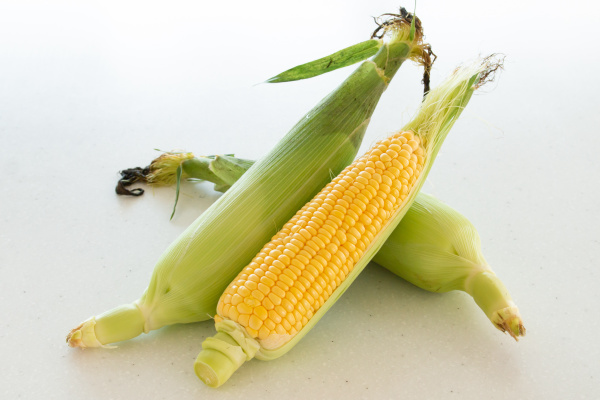
Gold Rush (Yellow)
This type of corn is sweet and has a soft husk. It features a strong, quintessential corn fragrance, and has large juicy kernels that provide rich flavor when taking a bite. This type is recommended for cooking into various dishes, such as rice cooked with corn or the ice cream that we will introduce in this article.
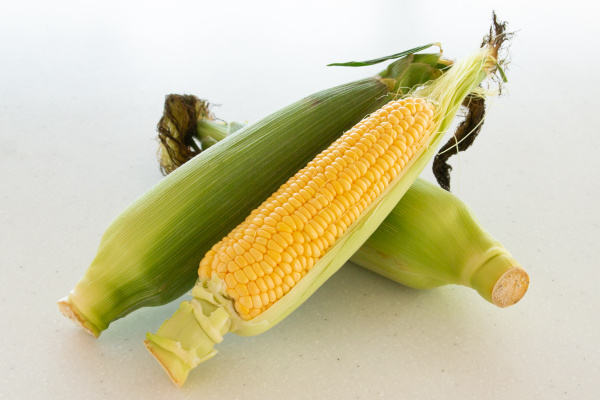
Sunny Chocolate (Yellow)
This type features a high sugar concentration at 19 degrees, and also has a thin husk. It is one type of corn that is called fruit corn. Although it is a high sugar content, it offers a refreshing sweetness, and has a pleasant texture that is soft and juicy.
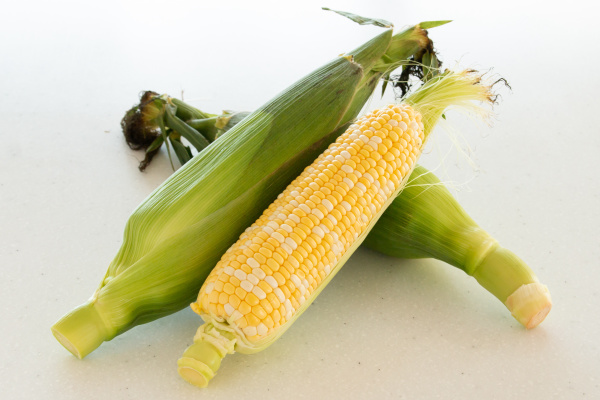
Mille-feuille (Bicolored)
This type is a bicolored corn with a 3:1 ratio of yellow to white kernels. The name comes from its beautiful contrast of colors, which looks like mille-feuille, a confectionary that has layers of pie crust. This corn variety has a high sugar content at 18 to 19 degrees, and offers a rich sweetness combined with fruitiness. This corn type is often large and heavy.
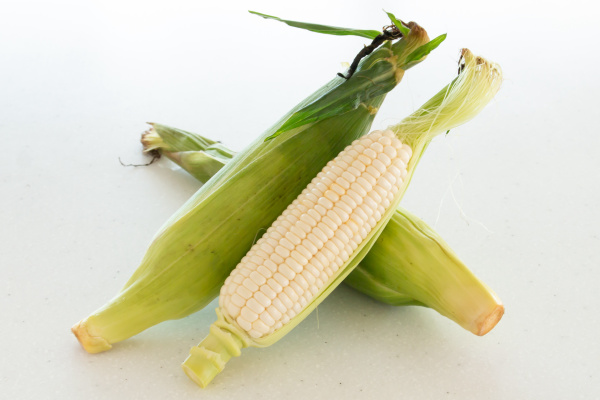
White Chocolate (White)
This type is a “white (silver)” corn that features kernels that shine like pearls after being boiled. When fresh, this corn can be eaten raw. It features a high sugar concentration at 18 degrees, and has thin husks and juicy kernels that make it almost like a fruit, although it does not have a strong corn fragrance like yellow types do.
Additionally, young corn that has been harvested to thin out crops of sweet corn, regardless of the variety, is sold as baby corn.
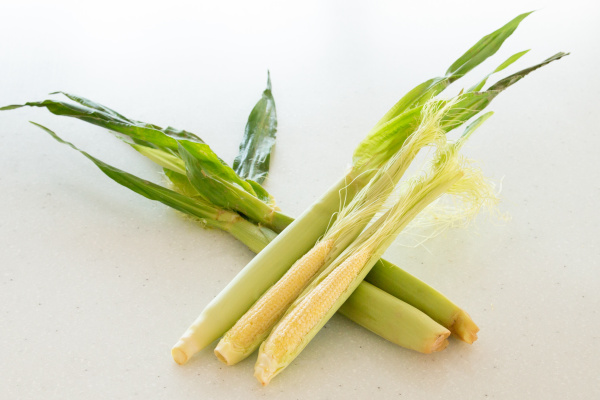
Baby corn
Baby corn is young corn with smaller kernels. Fresh baby corn can be steamed with its husks on for a fragrant, crunchy dish, allowing one to feast on the silk and cob as well. It is also an ingredient perfect for box lunches.
Summer sweets with the fragrance of corn
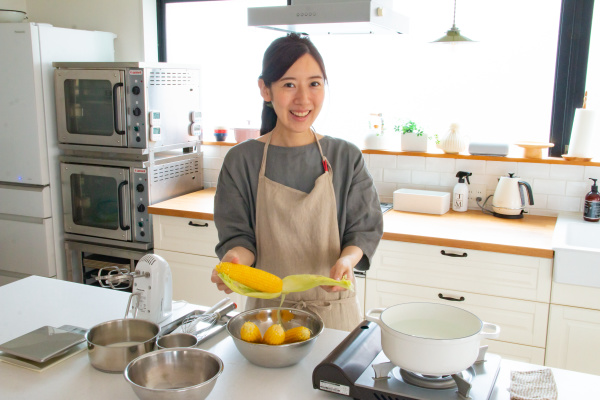
We would like to introduce a sweets recipe featuring the rich fragrance of corn, courtesy of the sweets expert Ms. marimo.
“Corn is delicious when it is made into sweets, and it also goes well with salty and sweet flavors. I recommend combining it with soy sauce, just like broiled corn.”
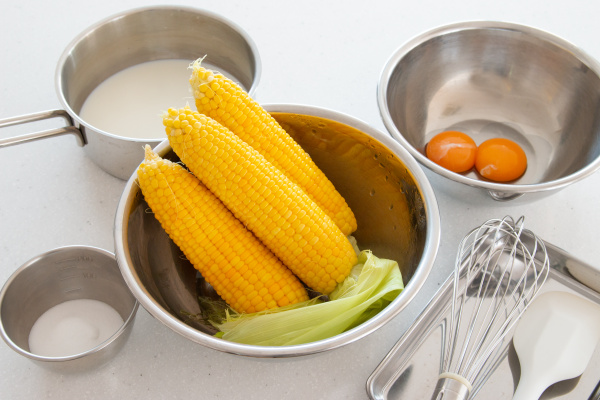
According to marimo, for sweets featuring green and yellow vegetables, vegetables with a powerful flavor should be selected to prevent blandness, and one should make the most of the colors of the ingredients without depending on artificial colors. Cooking vegetables in a way that maximizes their sweetness will also help in cutting down the sugar used in sweets.
For this article, marimo has created a recipe for ice cream using the Gold Rush type corn, to make the most of its taste and bright yellow color.
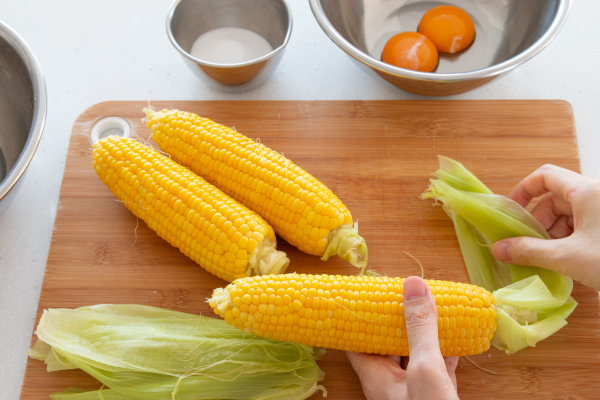
“This recipe uses a rich amount of pureed corn, giving it a natural and mild sweetness and fragrance—it is really delicious! This ice cream includes egg yolk for a full-bodied taste and rich texture.”
marimo also gave us some serving tips as well—as ice cream tends to harden after being frozen one night after preparation, leaving it at room temperature for 10 minutes before eating will create the perfect softness. Serving it with a spoon is fine, but using an ice cream scoop will create cute and round balls of ice cream. Chilling the serving instrument for five minutes before using it will prevent it from melting the ice cream, and is highly recommended.
Ice cream that maximizes the appeal of corn, its rich nutrition, taste and pleasant crunchy texture—how about giving it a try when staying at home?
Corn
Source:Ayako YajimaPeak Season
July to September
Tips
・Select corn that has a firm and thick base, and is solid and heavy
・Select corn that has an ample amount of silk that is brown and not damp
・Select corn that has fresh husks with many visible lines
・Select corn that is full of kernels to the tip, and have not been eaten by insects
How to enjoy them
・Leave only a few inner husks and cook slowly in water, without reaching the boiling point
・Add leftover cobs when boiling or cooking, as the cob also contains great flavor and sweetness

